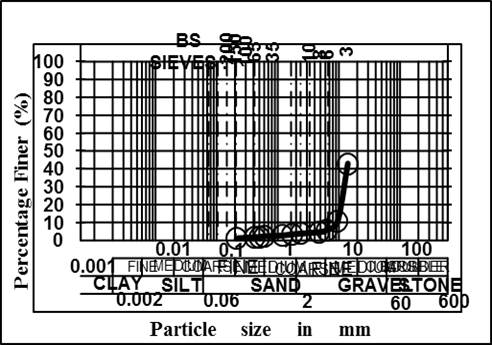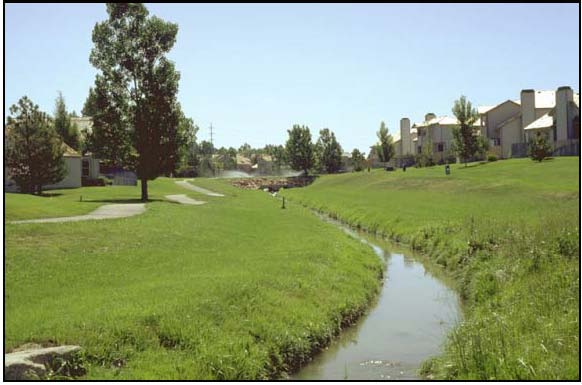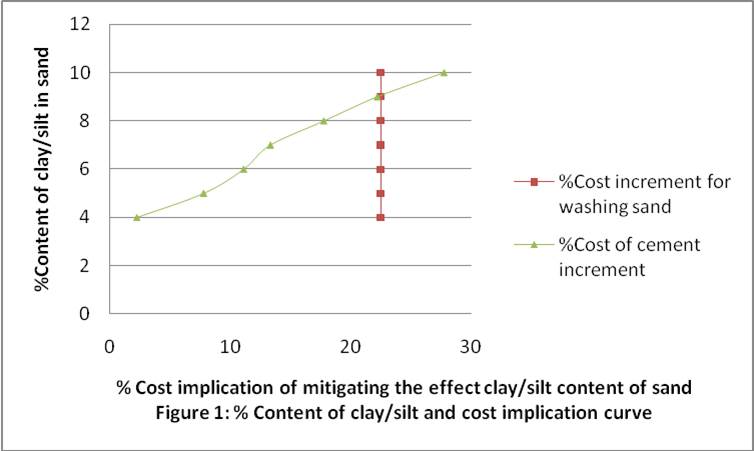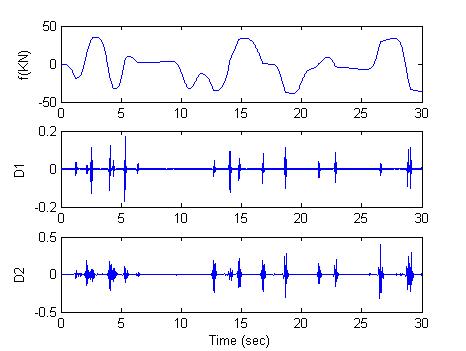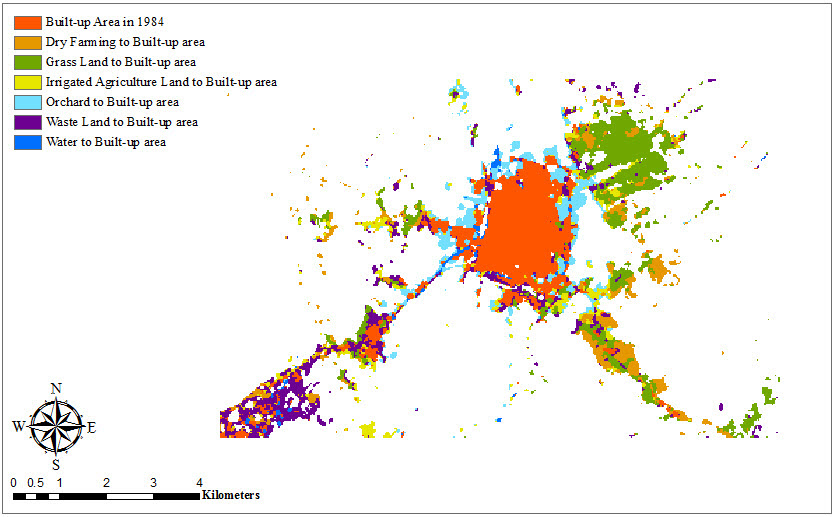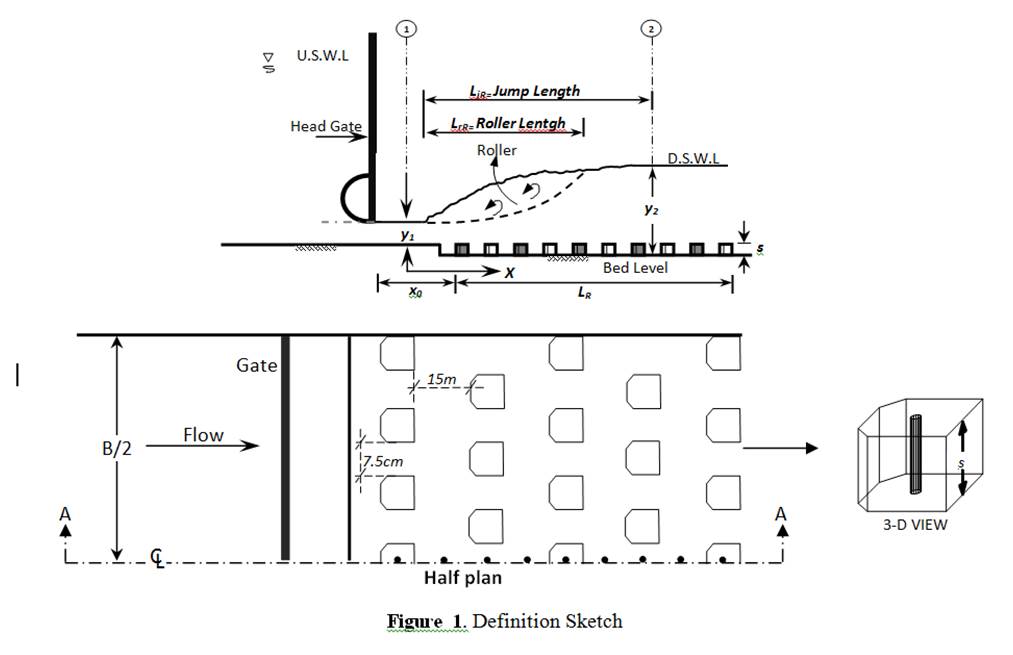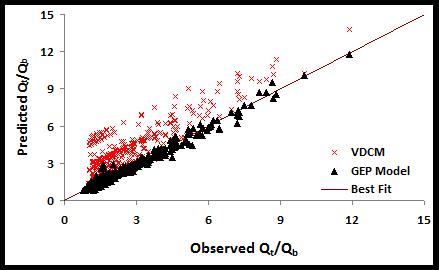Volume 2 : Issue 4, July 2012
Table of Content, 30 July 2012
|
Research Title/ Field |
Article (Abstract) |
Download |
|
Material-Based Ultimate Moment of Resistance of a Rectangular Concrete Section |
Original Article, B23 ABSTRACT:The incessant collapse of buildings in Nigeria in recent years has been a major concern. This paper addresses one of the major possible causes of building collapse. The minimum compressive strength of concrete using pit-sand as a fine aggregate in Akure, Nigeria was statistically estimated. On the basis of the estimated nominal concrete strength, an implied ultimate moment of resistance of singly reinforced concrete rectangular sections is proposed. The proposal shows that the recommended resistance of concrete given by BS8110 (1997) may be reduced by as much as 50% in order to accommodate the minimum concrete strength for a 1:2:4 mix. A numerical design example based on the proposal showed the necessity of additional compressive reinforcement to justify the use of the current BS 8110 (1997) requirement if Akure pit-sand must be used as fine aggregate. |
|
|
Effects of Urbanization on Stream Channels |
Original Article, B24 ABSTRACT:In response to urbanization, stream channels can undergo substantial changes, especially if channel stabilization measures are not instituted in the early stages of urbanization. Urbanization causes (1) significant increases in peak discharges, total runoff volume, and frequency of bank-full discharges; (2) the steepening of channel slopes if and where natural channels are straightened to accommodate new development; (3) reduction in sediment bed load from fully developed areas; and (4) eroding and degrading natural channels. These factors, in combination, create conditions that are conducive to channel instability—widening (erosion) and deepening (degradation) in most reaches and debris and sediment accumulation (aggradation) in others. To fully evaluate the proper channel morphological processes when undertaking a basic design or protective measure project, it is necessary to have some knowledge of channel stability concepts. The normal objective of channel stability evaluation is identification of principal channel hydraulic parameters influencing the stability of the channel. After identifying these parameters under existing channel conditions, the values of these parameters under future conditions are estimated. For areas undergoing urbanization, one of the most important changes is an increase in the volume, frequency, and flow rates of water in main channels. Stability analysis is then performed based on hydraulic parameters for anticipated future conditions, and stabilization measures are planned to minimize potential channel erosion under future conditions. There are a number of quantitative methods of channel stability analysis available to the designer including allowable velocity methods, tractive force calculations, and Leopold channel configuration relationships, among others. The hallmark of urbanization is increased imperviousness. Planning of a major drainage system must account for changes in hydrology, hydraulics, and channel stability that urbanization produces. As a result, the design of the major drainage system must be based on fully urbanized conditions to assure adequate capacity for conveyance of the major (e.g., 100-year) flood event. It is also important to recognize that the higher sediment loads during the process of urbanization (during construction) may shift the channel toward an equilibrium state that is different from the desired stable channel balance for the urbanized basin. |
|
|
Cost Implication of Mitigating the Effect of Clay/Silt Content of Sand on Concrete Compressive Strength |
Oiginal Article, B25 ABSTRACT: In Nigeria, reinforced concrete is one of the major building materials been used in the construction of buildings. In the specification of concrete, prescribed mix is normally used. However, tests carried out on different batches of concrete produced, using prescribed mix 1:2:4 of concrete show that the concrete did not acquire the 20N/mm2 expected strength at the age of 28 days. Depending on the type of sand used for the production of the concrete, the acquired strength after 28 days is between 25% and 60% of the expected strength. This reduction in strength will ultimately affect the functionality and durability of structure constructed from such concrete. To mitigate the effect of clay/silt content of sand, the sand can be washed free of clay/silt or the cement is increased in proportion to the percentage content of clay/silt in the sand. Since the mitigation of the clay/silt content of sand on concrete strength comes with extra cost, there is need to determine this cost in other to be able to build effective and safe structures. The author evaluates the cost implication of mitigating this reduction effect of the type of sand used on concrete strength. The extra cost incurred in the production of 1m3 of concrete (using mix ratio 1:2:4) in terms of washing the sand free of clay/silt is 22.5%, while that of cement increment is between 2.22% and 27.75% depending on the percentage of clay/silt content of sand. Mathematical models, which can be used to estimate the cost implication of this mitigation, are derived. |
|
|
Wavelet-Based Method for Damage Detection of Nonlinear Structures |
Oiginal Article, B26 ABSTRACT: In the recent decades, damage detection and system identification methods that are based on wavelet analysis and signal processing for structural health monitoring of engineering structures have been developed. Analyses that are based on time-frequency domain provide more information about non-stationary signals. In this paper, an effective method is presented for damage detection of nonlinear structure based on restoring force by using wavelet transform. Two nonlinear frame models are used for simulation of the real condition of structures and restoring force response is calculated by Runge-Kutta method. The results for damage detection by the proposed method in the structures show the reliability of the method. |
|
|
Land Use Change Detection of Maragheh City and Its Implication for Agricultural Area and the Orchards by Using the Multi-Temporal Satellite Imagery |
Oiginal Article, B27 ABSTRACT:Urban growth is one of the complex behaviors which the cities show over passing time and in order to meet the needs of living spaces, working spaces, shopping areas, etc. of its residents. Sometimes this behavior is in contrast with agricultural areas and it causes destruction of this areas. Maraghe is one of the cities whose urban growth process has been in contrast to agricultural areas and this contrast has caused the destruction of agricultural areas and orchards at the price of urban built-up areas. At this paper, the changes of agricultural areas and especially the orchards of Maraghe to built-up areas have been shown between 1984-2011 by using the Landsat TM & ETM+ imagery and GIS. Thus, the images have been classified using Fuzzy ARTMAP method and consequently the process of land use changes have been extracted by utilization of Cross correlation. The results of paper show that about 591 hectares of agricultural areas has been changed to built-up areas in the period of 1984-2011 (hence 45 percent of entire land use changes); 207 hectares of agricultural areas and 16 percent of entire changes to built-up areas consists of orchards. In addition to having ecological effects, Maraghe orchards are one of the indicators of the urban landscape and identity. Keywords:Land use change, city of Maraghe, agricultural areas, RS & GIS. |
|
|
Design of Stilling Basins using Artificial Roughness |
Oiginal Article, B28 Keywords:Hydraulic jump, Abrupt Drop, Rough beds |
|
|
Gene Expression Programming for Prediction of Flow Discharge in Compound Channels |
Oiginal Article, B29 ABSTRACT:There are many studies on the hydraulic calculation of steady uniform flows in compound open channels. Based on these studies, various methods have been developed with different assumptions. In general, these methods either have long computations or need numerical solution of differential equations. Furthermore, their accuracy for all compound channels with different geometric and hydraulic conditions may not be guaranteed. In this paper, to overcome with these limitations, a new simple and dimensionless equation has been proposed based on gene-expression programming (GEP), which is an extension to genetic programming (GP). In this equation only three parameters (e.g. depth ratio, coherence and ratio of computed total flow discharge to bankful discharge) have been used to simplify its applications for hydraulic and river engineers. By compiling 394 stage-discharge data from laboratories and fields of 30 compound channels, this new equation has been applied to estimate the flow conveyance capacity. The proposed GEP approach gives satisfactory results (R2 = 0.98 and RMSE = 0.32) compared to traditional method (VDCM) with R2 = 0.69 and RMSE = 1.72 for flow discharge computations. Keywords:Compound Channels, Gene Expression Programming, Stage-Discharge Curve. |
|

